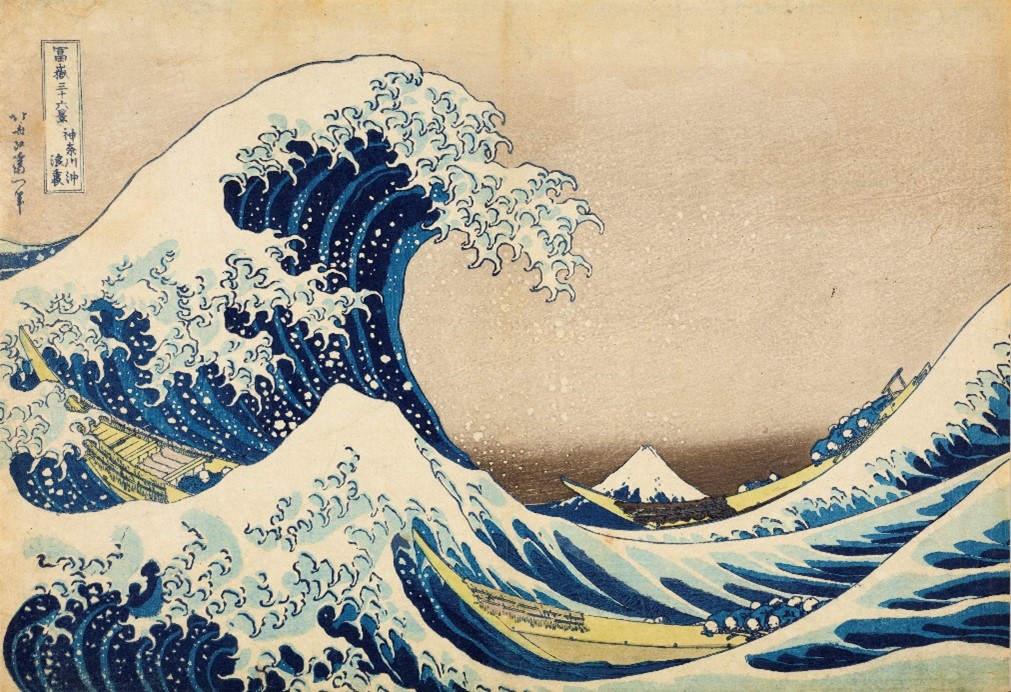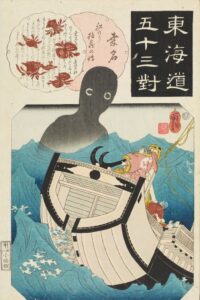Hi hi! Jess again!
Long time no see! We returned to Harajuku to take a look at one of its hidden gems – the Ota Memorial Museum of Art, a small museum bursting with an incredible archive of traditional woodblock prints, known as ukiyo-e.
You’ve probably seen examples of ukiyo-e, especially the work of Hokusai, a renowned master of the art.

Hokusai’s 1831 masterpiece, The Great Wave off Kanagawa, is well-known worldwide.
But our interview with the curator at the Ota Memorial Museum reveals that ukiyo-e goes so much deeper than majestic imagery of Mt. Fuji or portraits of powerful warlords. Woodblock printing made mass production of art possible, and accessible to ordinary people — and it spanned a vast array of applications, including illustrations of popular literature, famous actors, advertisements, comical scenes, fliers, calendars, and of course, depictions of scenery and nature.

A very spooky image – Kuniyoshi Utagawa’s depiction of the Umibōzu, or “Sea Monk”, appearing before a sailor, demanding him to name the most horrible thing he knows. The sailor replies that his profession is the most horrible thing he knows, and the Umibōzu disappears.